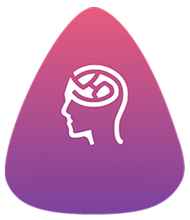Read a viewpoint opposite to yours on a policy or roadmap—summarize its strongest point in one sentence.
Pause and ask: “What’s another way to see this?” when reacting strongly to a shifting requirement.
Choose one habit today to do differently—change the order, method, or tool you usually use.
Read an article from a different function—note one idea you could apply to your roadmap.
Challenge your default choice in a low-stakes task—try the opposite to stretch flexibility.
Use the phrase “That’s interesting—tell me more” when a senior challenges your view.
Journal about a time rigid thinking blocked alignment—what might openness have created across teams?
Reflect on your reaction to shifting priorities—do you resist, explore, or experiment with new approaches?
Describe a time you adapted well to a surprise dependency—what thinking enabled the shift?
Write about a belief you’ve outgrown about “how things work here”—what influenced the shift?
List three recent challenges—did you consider multiple angles or get stuck in one narrative?
Explore how curiosity shows in steering meetings—when do you ask “what if,” and when do you shut it down?
Present a new process idea to peers that challenges old habits—invite dialogue, not consensus.
Switch perspective in a project—view it through another department’s lens and adapt your approach.
Take on something intellectually stretching this week—then reflect on what you learned.
Pick a complex topic you know well—explain it to your team as if they were new to it.
Use a “yes, and” response in disagreements—build constructively on what’s said.
Invite your team to challenge your assumptions—respond with curiosity.
Ask a teammate to point out when you seem fixed-minded—what behaviors signal that to them?
Share an example where your mindset shifted recently—ask a colleague how theirs has evolved.
Ask a colleague for feedback on your brainstorming style—do you invite or block new ideas?
Start a conversation with someone outside your unit—ask how they approach change.
Share how you processed a complex decision—ask a peer where you could have been more open.
Create a “blind spot swap” with a peer—exchange one area you each tend to overlook.
Reframe “That’s not how our unit works” into “What if we tried this once to learn and adapt?”
Instead of “That won’t work here,” ask: “Under what conditions could this succeed here?”
Reframe uncertainty as optionality—more possible paths, not just more problems.
When stuck, say: “Let’s assume the opposite is true”—see what new ideas emerge.
See conflicting views as data, not threats—what new variables are they revealing?
Reframe mistakes as learning data—adjust your hypothesis and test again.
Notice when you reject a new idea quickly—what bias or pressure might be driving that?
Track your first response to challenge—curiosity, threat, or indifference?
Observe how you respond to surprises—freeze, pivot, or adapt—what shows first?
Watch someone handle rapid change—what thinking helps them pivot effectively?
Observe meetings where innovation thrives—what mindsets are visible in those rooms?
Track your language in uncertain moments—do you ask “what if” or shut ideas down?


 Give Feedback
Give Feedback
